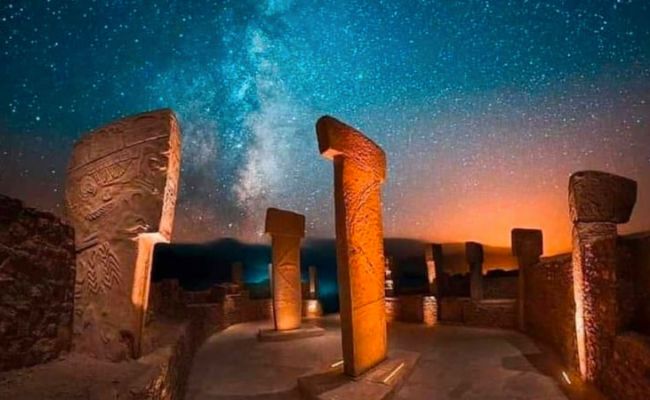The world’s oldest known temple Göbekli Tepe, is located in southeastern Turkey and dates back over 11,000 years. Early hunter-gatherer civilizations built it before agriculture, and it consists of colossal T-shaped limestone pillars with complex animal and symbolic carvings within circular and oval enclosures. These structures demonstrate a sophisticated grasp of ritual and communal meetings, calling into question previously held beliefs about ancient societies’ capacities. Göbekli Tepe provides important insights into early spiritual and cultural practices, implying intricate belief systems and ceremonial rituals that aided communal cohesion.
Despite preservation challenges caused by exposure and weathering, ongoing efforts to protect and study Göbekli Tepe highlight its global significance, with its inclusion on the UNESCO World Heritage tentative list emphasizing its importance as a key site for understanding human civilization’s origins and the evolution of religious expression.
Göbekli Tepe History
In contrast to Tamshing Lhündrup Monastery, Göbekli Tepe is the result of a collaborative effort by early hunter-gatherer societies in southeastern Turkey rather than a single founder or spiritual leader. Göbekli Tepe, which dates back over 11,000 years, is known as the world’s oldest temple complex. Klaus Schmidt, an archaeologist, discovered it in 1994 while conducting salvage excavations prior to the construction of a nearby dam. The site consists of multiple circular and oval-shaped enclosures, each with gigantic T-shaped limestone pillars covered with exquisite animal and symbolic carvings. These patterns call into question long-held assumptions about pre-agricultural societies’ capabilities and social organization, implying a sophisticated awareness of ritual and community gatherings.
Deliberate burial rites or natural processes likely led to Göbekli Tepe’s eventual neglect and burial beneath layers of sediment. The twentieth century’s rediscovery, which sparked renewed interest and ongoing archaeological excavations, virtually erased its importance. Today, we regard Göbekli Tepe as a crucial location for comprehending the origins of monumental construction, early religious rituals, and the cultural advancement of humanity during a pivotal era in the ancient Near East, when hunter-gatherer societies transitioned to more settled agricultural societies.
Göbekli Tepe, dating back more than 11,000 years, is one of the oldest known colossal constructions built by early people. This archaeological site in southeastern Turkey predates agriculture and provides valuable insights into early human civilization and cultural evolution.
